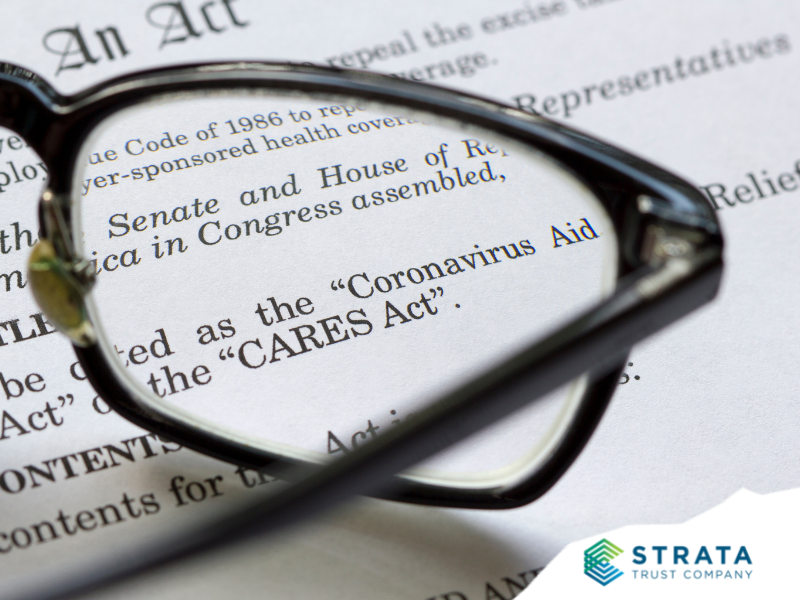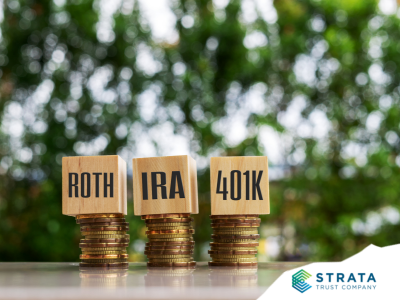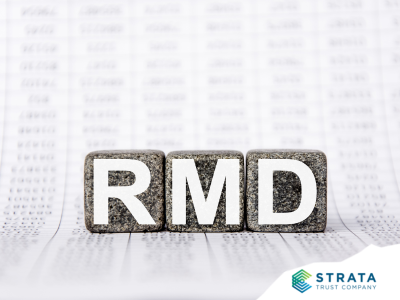The Coronavirus Aid, Relief, and Economic Security (CARES) Act, signed into law in March of 2020, included a number of provisions affecting retirement plans and IRAs. The IRS has provided answers to some common questions about these provisions and other retirement plan issues related to the COVID-19 pandemic.
Background
Section 2202 of the CARES Act allowed special distribution options and rollover rules for employer retirement plans and self-directed IRAs, for a limited time.
Specifically, plan participants and IRA owners were allowed to take up to $100,000 in coronavirus-related distributions from their retirement accounts in 2020, regardless of their age. These distributions were not subject to the 10% penalty tax that normally applies to early withdrawals. The Act allows taxpayers to spread the taxation on these distributions over three years, as well as to repay the distributions to a retirement plan or IRA within that time to restore their retirement savings and avoid taxation.
The Act also suspended Required Minimum Distributions (RMDs) from IRAs and employer retirement plans for 2020.
Taking RMDs
Q: Are RMD’s Due for 2021?
A: After last year’s waiver, some retirement savers have questioned whether RMDs must be taken in 2021. The RMD suspension was only for RMDs due in or for 2020. For 2021, you must take your RMD if you are age 72 by December 31, 2021. If you have a question about an RMD, connect with your financial advisor or IRA custodian to understand what requirements you need to meet this year and how to process the RMD in time. If you don’t have a strategy for RMDs there are several options that can help you reduce or eliminate RMDs.
Paying Tax on and Repaying Special Distributions
Q: Will I owe tax if I took a coronavirus-related distribution?
A: According to the IRS Q&A, these distributions are included in income in three equal portions – over a three-year period, starting with the year when the distribution was received. In other words, if you received a $9,000 distribution in 2020, you would report and pay income tax on $3,000 in tax years 2020, 2021 and 2022. Taxpayers could also have elected to include the entire distribution as taxable income for 2020.
Q: Can I repay (either partially or in full) my coronavirus-related distribution to my retirement account?
A: Yes, any portion up to the full amount of the distribution may be repaid if deposited into a retirement plan or IRA within three years of the date the distribution was received. Repaid distributions are not subject to federal income tax, so taxpayers can avoid paying tax on any amount that is repaid before it has been included as taxable income on a tax return. Taxpayers can also receive a refund of tax already paid. For example, if you repay the full amount of your coronavirus-related distribution in 2022, you won’t have to include any of the distribution in your income for 2022, and you may file amended federal income tax returns for 2020 and 2021 to claim a refund of the tax paid on the amounts you included as taxable income for those years.
Rehiring Employees After Retirement
The IRS also addresses the rehiring of employees who have retired and begun receiving payments from their former employer’s qualified pension plan. Generally, if a plan does not allow participants to receive distributions from the plan while still working, the plan may only begin paying benefits after the employee has experienced a “bona fide retirement.” Given this rule, employers and employees are questioning what happens if the employer rehires an individual due to unforeseen hiring needs related to the COVID-19 pandemic (e.g., a public school district rehiring a teacher to help ease the labor shortage).
Q: Will the rehire cause that individual’s prior retirement to no longer be considered a “bona fide retirement”?
A: The answer, generally, is no. “A rehire due to unforeseen circumstances that do not reflect any prearrangement to rehire the individual will not cause the individual’s prior retirement to no longer be considered a bona fide retirement under the plan,” states the IRS. If the plan terms do not prevent the rehire, benefit payments could continue after the rehire.
Employers should analyze the impact of such rehires under the plan by taking into account any plan terms, the IRS stresses, including the need for plan amendments related to rehires. “For example, plan sponsors should review any plan terms requiring that an individual who retires and commences benefit distributions not be rehired within a specified period, any plan terms relating to the suspension of distributions upon rehire, and any other plan terms that may have an impact on the pension benefit of a rehire,” states the IRS.
Employer-Initiated Severances and Partial Plan Terminations
Additionally, the IRS addresses how the rehiring of employees laid off due to COVID-19 is treated in terms of these employees having an employer-initiated severance when it comes to a partial plan termination.
Q: Are employees who participated in a business qualified retirement plan, then laid off because of COVID-19 and rehired by the end of 2020, treated as having an employer-initiated severance?
A: Generally no, according to the IRS these employees are not considered to have had an employer-initiated severance—for purposes of determining whether a partial termination of the plan occurred—as long as they were rehired by the end of 2020.
More Information
Please connect with your financial advisor, IRA custodian, or tax consultant to understand the implications around investing in alternative assets and your self-directed IRA. Visit IRS.gov for additional clarity on IRS coronavirus-related relief for retirement plans and IRAs.















